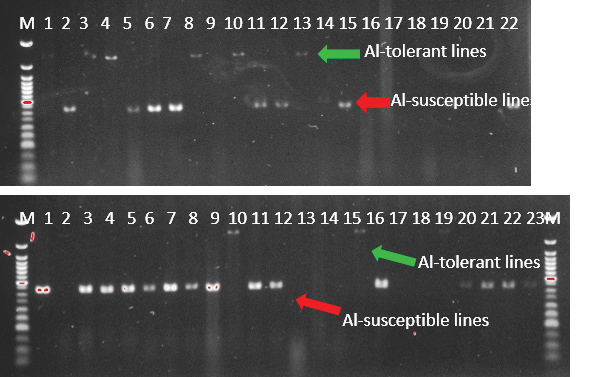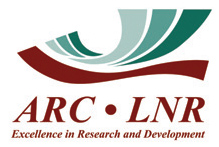
 Dr Ernest Dube,
Dr Ernest Dube, ARC-Small Grain, Bethlehem
 Dr Toi J Tsilo,
Dr Toi J Tsilo, ARC-Small Grain, Bethlehem
Aluminium (Al) toxicity is a major issue for producers across the world, affecting 67% of global farmland. This problem occurs in acidic soils (pH ≤ 5,5) and hinders the growth, development, and productivity of crops by damaging root growth.
Plants in acidic soil with Al toxicity usually have stunted growth and thickened roots, making them more vulnerable to drought. Different plant species and cultivars have varying levels of Al toxicity tolerance. Among cereal crops, rice is more tolerant than maize, wheat, and sorghum, while barley is the most sensitive. Researchers work to develop new cultivars that are more resistant to Al toxicity to help producers maintain healthy crops and avoid massive losses.
ARC-Small Grain has been crucial in evaluating commercial wheat cultivars for Al toxicity tolerance. The information gathered is published in the Annual Production Guidelines and is available to producers on the ARC-Small Grain website or by scanning the QR code below.
Studies have shown that using Al-tolerant cultivars, along with soil remediation methods like lime, manure, and compost, can significantly improve crop yield. For example, an Al-tolerant maize cultivar provided 61% higher grain yield than a sensitive cultivar under toxic conditions. The yield further improved when a lime treatment was applied.
AI toxicity tolerance study
More recently, ARC-Small Grain researchers conducted a study to investigate Al toxicity tolerance in a wheat population derived from two South African wheat cultivars, Tugela-Dn and Elands. This population had previously been examined for plant height and yield component traits, determining the underlying genetic factors (Lephuthing et al., 2022). Therefore, the present study intended to identify the genetic factors regulating Al toxicity and to establish the association with plant height. The study involved screening 139 wheat lines for Al toxicity tolerance using a staining technique and a molecular marker associated with Al tolerance in wheat. This research showed that 70% of the wheat population was highly susceptible to Al toxicity. However, 30% of the lines showed tolerance, which could be useful for future breeding efforts. The two screening methods synchronised well (r2 = 0,814, p < 0,05), but the molecular screening technique proved to be more efficient and powerful in discriminating between the Al-tolerant and susceptible wheat lines.

The research also revealed that Al toxicity tolerance in wheat is primarily determined by a single major gene located on chromosome 4D, and three new molecular markers for this gene were identified. These markers can help scientists screen for Al toxicity tolerance in future studies and transfer the gene to other wheat lines through the backcrossing method of breeding. Interestingly, the research also revealed that the genes responsible for Al toxicity tolerance and plant height were closely linked on chromosome 4D. This means that both traits can be improved simultaneously in a wheat breeding programme.

Conclusion
In conclusion, many cereal crops, including wheat, are susceptible to Al toxicity, which limits their production under toxic conditions. However, some Al-tolerant varieties have been identified and can be used in breeding programmes to develop more resistant crops. The latest research at ARC-Small Grain has identified three new molecular markers for the major gene responsible for Al toxicity tolerance in wheat, which will be valuable for future research and breeding efforts. Additionally, since the genes for Al toxicity tolerance and plant height are closely linked, both traits can be improved simultaneously.
 Resource
Resource
Lephuthing, MC, Khumalo, TP, Tolmay, VL, Dube, E and Tsilo, TJ. 2022. Genetic Mapping of Quantitative Trait Loci Associated with Plant Height and Yield Component Traits in a Wheat (Triticum aestivum L.) Doubled Haploid Population Derived from Tugela-DN× Elands. Agronomy, 12(10), p.2283.





























